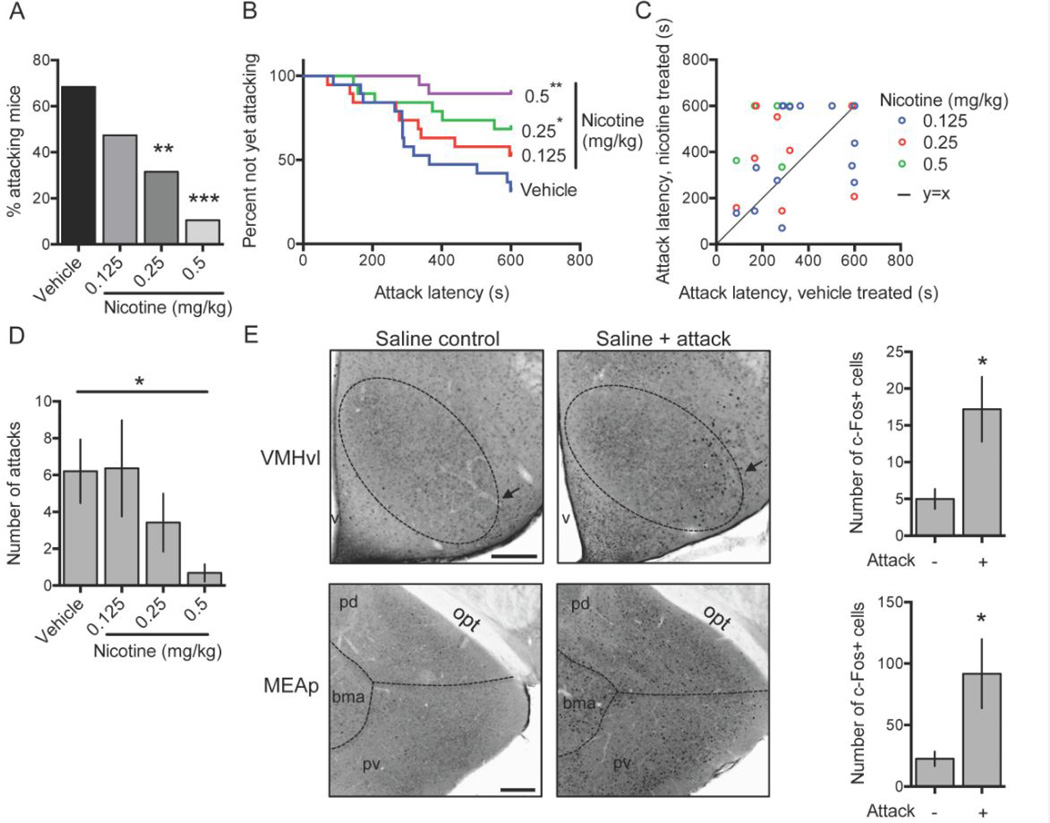Figure 1.
Single-housed male C57BL/6 mice were tested in resident-intruder assays after vehicle or nicotine administration and percentage of attacking mice (A), latency to first attack (B, C), and number of attacks (D) were measured; N = 19 mice, within-subject testing. Following an aggressive encounter or a control condition without exposure to an intruder mouse, c-Fos positive cells were measured in two regions implicated in aggressive behavior in mice: the ventromedial hypothalamus (VMH, dotted oval) ventrolateral portion (vl, arrow) and the medial amygdala posterior part (MEAp: combination of posterordorsal (pd) and posteroventral (pv)); N = 5 mice per treatment condition (E). Error bars represent S.E.M. Scale bar in E, 200 microns. *P < 0.05; **P < 0.01, ***P < 0.001 vs. vehicle-treated group. bma, basomedial amygdala. opt, optic tract, v, third ventricle.

